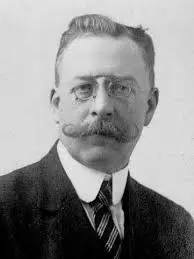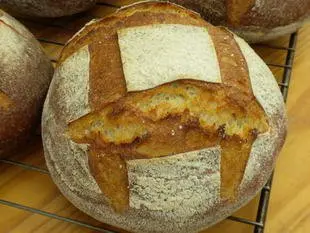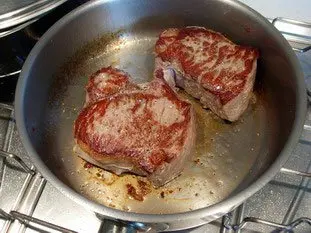Maillard reactions

With a name like that, they could well be some principle in mechanics, but in fact the term applies to something much closer to all of us: it's what gives food more flavour cooked than when raw!

You might think that there is nothing revolutionary in that, and that you already knew it: cooked meat has more flavour than raw meat! Of course that's true, but it took the good Monsieur Maillard to describe and explain the phenomenon.
In fact Maillard reactions crop up everywhere in cooking, and affect much of what we eat and drink.

- When the crust on a baked loaf is crisp and brown - that's them!
- When beer is brown (or amber-coloured) - there they are again!
- When coffee is dark after roasting and reveals its flavour
- When chocolate develops its delicious aromas after “cooking" the cocoa butter
- When the roast in the oven is covered with a fine and very tasty crust
- When the skin on fried chicken turns crispy
- When a dish just gets better and lightly browned on reheating
- You use your toaster
etc., etc.
If they are present, it's an excellent thing. It means that it's good, it's tasty, it has that great “properly cooked” flavour that I've already mentioned, and this is particularly true of cooking meat.
The consequence of all this is that we should try to encourage these reactions as far as possible. A simple example: when frying meat in a pan, it is better not to use a non-stick pan, so that the meat can stick on the bottom a little and the famous crust has a chance to form more effectively and more quickly. Unfortunately this can also stick well.

A final note on the subject – sheer genius – that I heard from the English chef Heston Blumenthal: if you cook meat in a non-stick pan, you can brown it beautifully in spite of this by turning the meat every 15 seconds throughout the cooking time. This needs to be done with tongs and not with a fork to avoid piercing the meat. It's a bit of a bind, but the result is remarkable!
PS : This also explains why those who enjoy steak tartare (which personally I find inedible, but each to his own…) are obliged to mix all manner of strong condiments with their raw meat: onion, herbs, sauces, egg yolk, etc., to give it some flavour. The same meat cooked would only need a sprinkle of salt and pepper, and voila!” … But at this point I'm just teasing my sister Isabelle, a real chip off the old block, who adores it just like her father!
Oven height
When we put a dish or cake in the oven, we naturally tend to put it on the middle shelf, and that's what we usually do. But in some cases, this position and height can be a little tricky, so let's find out why.October 8th 20251,6025
The importance of sieving
In recipes that use a fine powder (flour, powdered sugar, etc.), you'll often see the advice to sift before using it. To sift is to pass the powder in question through a sieve (a very fine strainer) before incorporating it into your recipe. It's often advice, but is it really useful?September 3rd 20256,9613
The grease spray
As soon as you have something in a recipe that sticks to the mold, the question always arises as to how difficult it is to remove from the mold. There's nothing more frustrating than breaking your cake when unmolding it, because part of it has stuck in the mold. The classic way to avoid this is...August 26th 20256,4065
Cake moulds
When we make a cake, or a cake of the same rectangular shape, we usually take out our usual mould and tell ourselves that the recipe is anyway "for a cake", but is it really that simple?August 25th 20256,5115
Thinning out herbs
If you need to add a long-stemmed herb (tarragon, mint, verbena, thyme, etc.) to a recipe, you'll probably only need the leaves and not the stem, so you'll need to remove the leaves. Leaf removal means keeping only the beautiful leaves, and eliminating the ugly stems and leaves, but how do you do...August 8th 20254,6295
What is the difference between bakery and patisserie?
This is a question that you may well have asked yourself and which I will attempt to answer. In France the two trades of "boulangerie" (bakery) and "pâtisserie" (patisserie and confectionery) have always been quite distinct, but where exactly do the boundaries lie? .February 7th 2017133 K 14.1
The so-called "nervous" meats
You've probably heard this before, we're talking about "nervous" meat, or meat with nerves, to describe what is indicated by the blue arrow on the left. This is a piece of beef, and what we call a nerve is not a nerve, it is in fact collagen (chemists sometimes call it a "collagen sink"), a...April 16th 202136 K4.5
The salad spinner is not only for salad
Where we see that the salad spinner can be used for many other purposes.March 25th 202211 K4.8
Raising (or leavening) agents
When we want to make a dough or batter rise when baking, either in patisserie or bread-making, we need to use a raising agent or leavening agent, one of which is called leaven. In the context of baking, a raising agent is simply what "makes something rise". It is a substance which, when added to...June 16th 202156 K4.8
Candied fruits: don't get ripped off
Do you like candied fruit? You might like to nibble a handful or add it to a recipe, like a classic fruit cake or delicious Italian specialities like panettone or sicilian epiphany pie.June 21th 201766 K 24.2









